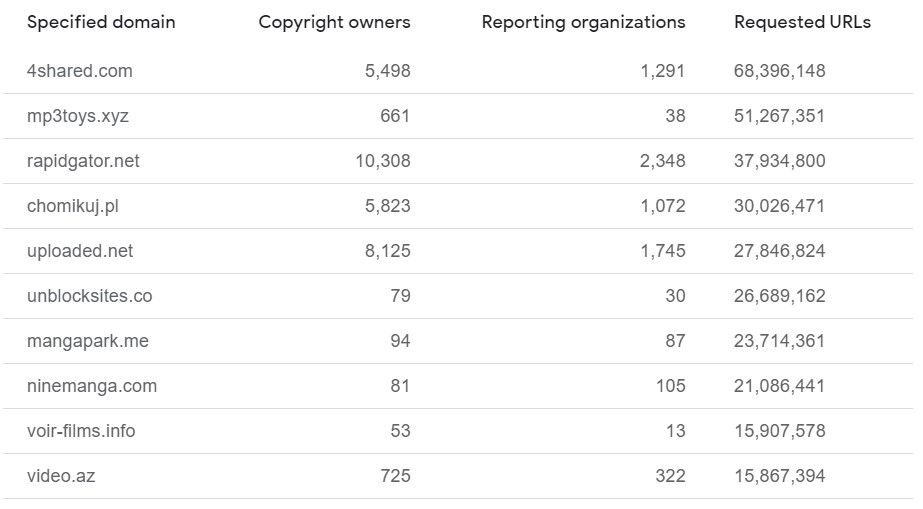While search engines are extremely helpful for the average Internet user, copyright holders also see a massive downside.
The fact that “infringing sites” show up in search results has become a source of frustration. As a result, Google and other search engines are facing a steady stream of DMCA takedown notices.
New Milestone
This week, Google reached a new milestone when it processed the five billionth removal request. It’s a mind-boggling number that calls for a detailed overview of how we got to this point.
It all started at the beginning of the last decade. In the spring of 2012, Google launched its Transparency Report which publishes all DMCA requests the company receives, including the targeted links and their senders. This provided fuel for hundreds of news reports as well as academic research.
What stood out right away is the number of questionable takedown notices, with copyright holders sometimes even going after their own sites. The transparency eventually helped to bring down the frequency of inaccurate complaints over time, but it also marked the start of a takedown surge.
Takedown Surge
A month before the notices were published in public, copyright holders reported an average of 35,000 URLs per day. Three months later that number had increased by 600%, to more than 210,000 links per day. And that was just the start.
Over the years we have kept a close eye on the takedown volume which continues to rise. At one point, the search engine processed close to three million links per day. Needless to say, getting to five billion was only a matter of time.
Trend Reverses
As time passed by, the trend slowly started to reverse. In recent years, the number of takedown requests has declined substantially. This is in part due to Google’s active anti-piracy policy which includes making such sites less visible in its search results.
These anti-piracy measures didn’t come out of anywhere. Copyright holders frequently and repeatedly urged Google to do something about the pirate link whack-a-mole. Up to the point where various governments were urged to intervene.
In 2017 this resulted in an anti-piracy agreement where search engines and copyright holders agreed to tackle the problem together. At the time Google had already taken some measures of its own, but the agreement likely helped, as takedown volumes started to drop soon after.
The precise details of the agreement were never published, nor have we heard of any updates in recent years. However, copyright holders informed TorrentFreak that they are happy with the direction that’s taken. That’s not surprising, since pirate sites continue to drop in search rankings.
Top Domains and Senders
If we look at the transparency report today, it’s also clear that times have changed. Not only has the takedown volume decreased, many of the domains for which Google received the most DMCA notices, are no longer active. This includes Filestube.com, MP3toys.xyz, and Unblocksites.co, which are in the all-time top 20.
Looking at the most active senders, things have changed as well. UK music group BPI leads that list with over half a billion reported links, but their reporting rate has tanked. The same is true for another top sender, Zee Entertainment, which went from more than three million takedowns per week in 2017, to less than 30,000 last week.
5 Billion in Perspective
The five billion figure itself also deserves some clarification. This number only refers to the URLs that were reported to Google, and includes duplicates, as well as pages that were not in Google’s index. The latter category is placed on a special watchlist to make sure they’re not added in the future.
Finally, Google also rejects millions of takedown requests because they are not pointing to infringing content. This applies to the more than hundred TorrentFreak URLs that were flagged, as well as pages from Netflix, IMDb, The White House, NASA, and even the FBI.
Looking ahead, we expect that Google will continue to tweak its algorithms to ‘hide’ pirate sites. This means that the takedown volume could drop further. In any case, it is not expected to rise drastically. And at the current rate, it will take a year or two before we can add another billion.


 While search engines are extremely helpful for the average Internet user, copyright holders also see a massive downside.
While search engines are extremely helpful for the average Internet user, copyright holders also see a massive downside.






